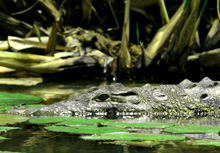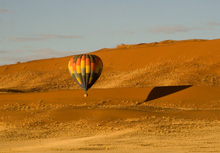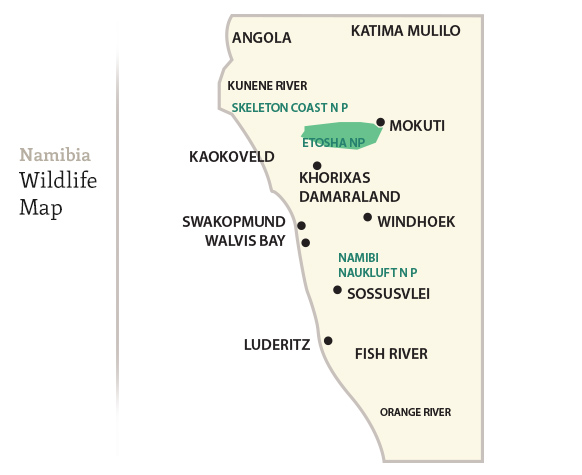Namibia, situated in the Southwest coast of Africa won its independence from South Africa in 1990 and has a population of just over two million. Unspoilt and rugged Namibia with clear stretches for easy spotting is home to 217 species of mammals of which 26 are endemic, 676 species of birds of which over 90 are endemic and thousands of plant species both endemic and non endemic. Namibia’s wildlife destinations include the Namib desert, the Fish River Canyon Park, Etosha National Park and the Kalahari desert. Desolate and beautiful canyons, dunes, gorges, arid shores and vast open stretches teeming with wildlife are an open invitation to the Wildlifer. Interestingly Namibia is also the highest producer of diamonds in the world!
REACHING NAMIBIA
Windhoek, Namibia’s capital has two airports, an International Airport and the smaller domestic airport called Eros. Air Namibia, British Airways or Comair and South African airways are some of the airlines flying into Namibia. Worth noting is that sometimes fare and connections are better if you fly into Johannesburg or Cape Town and then take a connection.
Another option is by sea into Walvis Bay, the main port of Nambia.
Roads are good in general and are motorable, however please note that land borders in most places close at night, hence it is best to reach destination before nightfall. The Wildlifer however will take care of your land arrangements. Buses are available from main points in South Africa. The service is called Intercape Mainliner.
The Wildlifer’s choice of Safari
Choose your Safari experience specially handpicked for the wildlifer.
-
Etosha National Park

Etosha, “a place of dry water” is an absolute delight for wildlife viewing due to its high concentration of animal and birdlife. Located just 435 km off Windhoek, the park is known for its white saltpan that covers more than 25 percent of the Park. This saline and rich pan has a depression which fills up with water during rains and is a huge attraction for all kinds of wildlife.
Access :
The park is well connected by road and takes approximately 6 hours to reach from Windhoek.
Area :
22,270 sq.km.
WILDLIFE :
This so called white desert is home to 111 species of mammals which include other rare and endemic species like the black faced impala and the black rhino. Gemsbok, Silver backed jackal, kudu, lion, leopard, elephant, giraffe, hyena are also some easy game. More than 340 bird species are found in the area during the rainy season between March and November, due to the water filled basin.
ACTIVITIES :
Walking Safaris, Vehicle Safaris, Camping, Bird watching
-
Namib Desert

World’s most ancient desert, world’s highest sand dunes in Sossulvei, clear skies, stunning views and wildlife all make a perfect package for an offbeat safari destination! The Namib Nakluft National Park(the largest park in Africa), The Sossulvei, the Skeleton National Park and the NamibRand Nature Reserve are some attractions in the area. A paradise for photographers and artists alike the Namib also is the wildlifer’s choice.
Access :
The Namib Desert area is easily accessible by road and is just approximately 250 kms(4h) from Windhoek.
Area :
81000 sq.km.
WILDLIFE :
Due to the nature of landscape there are many unique and even endemic plant and animal species found here. Lizards, Snakes, Gemsbok, Desert Elephant, Ostriches, Beetles are some animal species found here. Unique to the Namib is also the Welwitschia plant that is not found anywhere else in the world.
ACTIVITIES :
4x4 Safaris, Balloon Safaris, Adventure sports like-Sand skiing, skydiving, paragliding and mountaineering, Birdwatching, Hiking, Fishing


